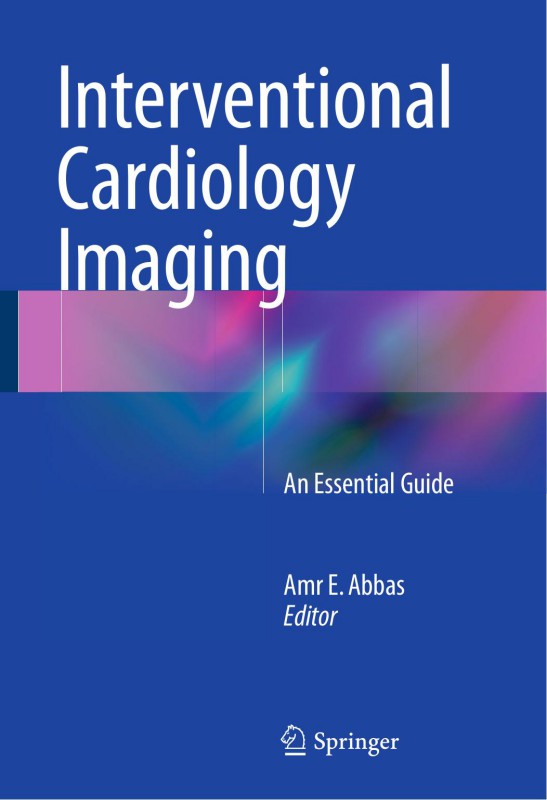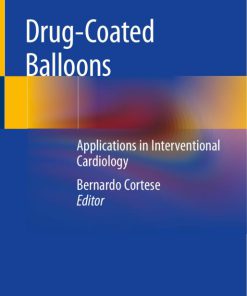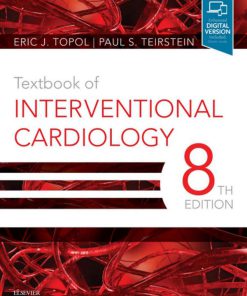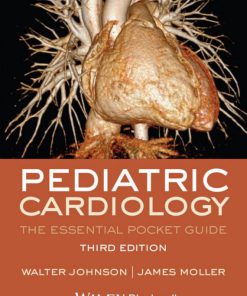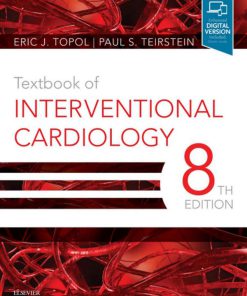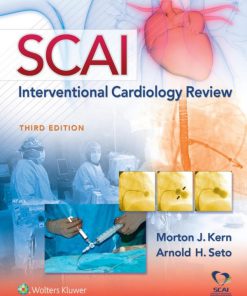Interventional Cardiology Imaging An Essential Guide 1st Edition by Amr E Abbas ISBN 1447152395 9781447152392
$50.00 Original price was: $50.00.$25.00Current price is: $25.00.
Authors:Interventional Cardiology Imaging An Essential Guide-Springer-Verlag London (2015) , Author sort:London, Interventional Cardiology Imaging An Essential Guide-Springer-Verlag , Published:Published:Jun 2015
Interventional Cardiology Imaging An Essential Guide 1st Edition by Amr E Abbas – Ebook PDF Instant Download/Delivery. 1447152395, 9781447152392
Full download Interventional Cardiology Imaging An Essential Guide 1st Edition after payment
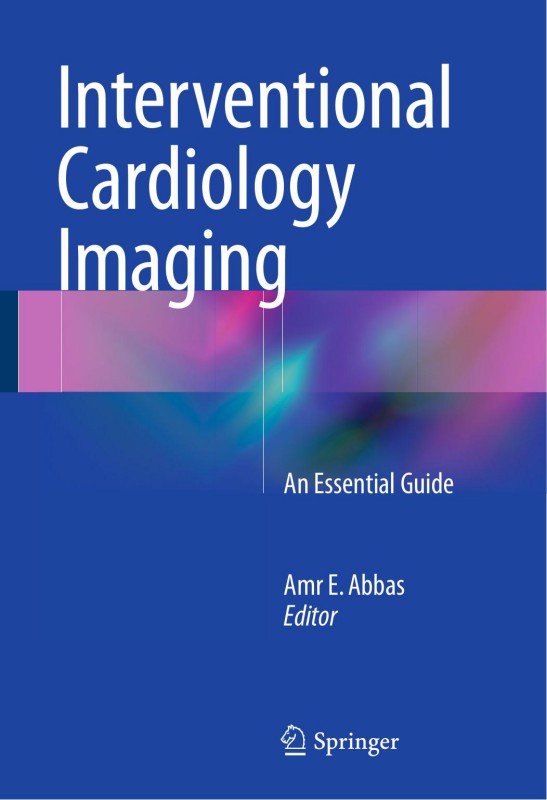
Product details:
ISBN 10: 1447152395
ISBN 13: 9781447152392
Author: Amr E Abbas
Interventional cardiology has transitioned from angiographic subjective analysis of stenosis severity into assessment of plaque characteristics and objective assessment of stenosis severity. The evolution of novel interventional imaging modalities is progressively altering our understanding of coronary artery disease diagnosis and prognosis. This book will be an essential companion to assist interventional cardiologists in better assessing patients with Coronary Artery Disease. It will encompass and review all interventional imaging modalities and provide guidance for interventional cardiologists to use these modalities.
Interventional Cardiology Imaging An Essential Guide 1st Table of contents:
1: Basic Coronary Artery Anatomy and Histology
Introduction
Normal Coronary Anatomy
Origin from the Sinus of Valsalva
Myocardial Bridging
The Coronary Arteries
Right Coronary Artery
Left Main Artery
Left Anterior Descending Artery
Left Circumflex Artery
Dominance
Segmental Anatomy
Histology
Vessel Wall
Tunic Intima
Tunica Media
Tunica Adventitia
Conclusions
References
2: Physiology of Coronary Blood Flow
Introduction
Mechanical Determinants of Coronary Blood Flow
Coronary Artery Perfusion Pressure
Coronary Artery Resistance
Myocardial Oxygen Demand and Supply
Control of Coronary Flow and Autoregulation
Metabolic Factors
Endothelial Factors
Neurohormonal Factors
Tachycardia and Bradycardia Effects on Coronary Flow
Coronary Vasospasm
Pathophysiology of Coronary Artery Stenosis
Hemodynamic Significance of Coronary Stenosis
Coronary Flow Reserve
Assessing Significance of Coronary Stenosis
Future
References
3: Pathophysiology of Coronary Artery Disease
Introduction
Definitions: Angina
Definition: Myocardial Infarction
Coronary Artery Anatomy
Atherosclerosis
Theories of Atherogenesis
Insudation Theory
Encrustation Theory
Reaction to Injury Theory
Atherosclerosis: Pathophysiology
Microscopic Description of the Development of an Atherosclerotic Lesion
Macroscopic Description of the Development of an Atherosclerotic Lesion
Arterial Remodeling and Coronary Artery Disease
Lesion Morphology/Type
AHA Classification (Fig. 3.5)
Type I
Type II
Type III: “The Intermediate Lesion”
Type IV
Type V
Type VI
The Vulnerable Plaque
Plaque Rupture
Plaque Erosion
Coronary Dissection
Coronary Aneurysm
Coronary Vasculitis
Coronary Artery Restenosis
Restenosis
Stent Thrombosis
Graft Failure
Conclusions
References
4: Qualitative and Quantitative Coronary Angiography
Introduction
Selective Coronary Angiography
Routes of Access
Equipment Selection
Judkins Catheters
Engagement of the Left Coronary Artery Using Judkins Left (JL) Catheter (Femoral Approach)
Engagement of Right Coronary Artery Using Judkins Right Catheter (Femoral Approach)
Engagement of the Left Coronary Artery Using Amplatz (Femoral)
Engagement of the Right Coronary Artery Using Amplatz (Femoral)
Multipurpose Catheter
Radial Catheters
Special Considerations
Cineangiographic Imaging, Radiation Dose Measurement, and Contrast Types
Cineangiographic Imaging
Radiation Dose Measurement
Contrast Types
Angiographic Projections, Recommended Views for Specific Coronary Segments
Angiographic Projections
Specific Coronary Segments
Recommended Views for Specific Coronary Segments
Left Coronary Artery
Left Main
Left Anterior Descending (LAD)-Circumflex Bifurcation
Circumflex and Marginal Branches
LAD and Diagonal Branches
LAD-Circumflex Bifurcation, Circumflex, Marginal
Right Coronary Artery
Bypass Graft Angiography
Right Coronary Bypass Graft Angiography
Left Coronary Artery Bypass Graft Angiography
Left Internal Mammary Artery Graft Catheterization
Right Internal Mammary Artery Graft Catheterization
Ventriculography
Wall Motion Abnormalities
Mitral Regurgitation
Ventricular Septal Defect
Calculation of LV Ejection Fraction
Identifying Specific Coronary and Aortic Abnormalities
Coronary Artery Aneurysms (CAA)
Coronary Thrombus
Coronary Artery Tortuosity
Calcified Coronary Artery Plaque
Coronary Artery Dissection
Calcified Aortic Valve
Procedural Complications
Local Complications
Hematoma
Pseudoaneurysm
Retroperitoneal Hematoma
Arteriovenous (AV) Fistula
Contrast Induced Nephropathy (CIN)
Coronary Complications
Coronary Artery Spasm
Coronary Artery Dissection
Coronary Artery Perforation
Additional Complications: Death, Stroke, Arrhythmias, and Heart Failure
Death
Stroke
Arrhythmias
Heart Failure
Angiographic Evaluation of Coronary Perfusion
Quantitative Coronary Angiography (QCA)
Assessment of Lesions Characteristics and Suitability for PCI
Limitations of Coronary Angiography
Conclusions
References
5: Imaging of Coronary Artery Anomalies
Introduction
Normal Coronary Anatomy
Embryology of Coronary Artery Development
Incidence
Classification of Anomalies
Anomalous Coronary Artery from the Opposite Sinus (ACAOS)
Anomalous Coronary Artery from the Pulmonary Artery, the Bland-White-Garland Syndrome
Coronary Fistulas
Myocardial Bridging
Symptoms
Pathophysiology
Screening for Coronary Anomalies
Imaging for Coronary Anomalies
Echocardiography
Coronary Magnetic Resonance Angiography
Coronary CT Angiography (CTA)
Invasive Coronary Angiography
Management of Coronary Anomalies
Conclusions
References
6: Coronary Flow Resistance and Reserve
Background and Physiology
Relationship of Coronary Artery Resistance and Basal Coronary Blood Flow
Hyperemic Coronary Blood Flow
Measures of Resistance and Flow in the Cardiac Catheterization Laboratory
Assessing Coronary Indices of Flow and Resistance: Technique and Performance
Measurements Obtained
Average Peak Velocity
Distal CFR
Relative CFR
Coronary Flow Reserve in Different Populations
Hypertension
Diabetes Mellitus
Tobacco Exposure
Dyslipidemia
Cardiac Transplant
Stenosis
FFR Versus CFR
Pitfalls and Challenges
References
7: Fractional Flow Reserve
Introduction
Background and Physiology
Characteristics of Fractional Flow Reserve
The Theoretical Normal FFR Value Is 1 Regardless of the Patient, the Vessel, and the Myocardial
Abnormal FFR Has a Well-defined Cutoff with a Narrow Grey Zone of 0.75–0.8
FFR Is Not Influenced by Systemic Hemodynamics
FFRmyo Accounts for Both Antegrade and Retrograde (Collateral) Blood Flow
FFR Normalizes the Stenosis Severity to Myocardial Mass Being Perfused
FFR Has Unparalleled Special Resolution
Technique and Performance
Artifacts, Pitfalls and Troubleshooting
Hyperemic Agents and Pharmacological Considerations
Hemodynamic Artifacts and Technical Considerations
Less Common Physiological FFR Artifacts
Hydrostatic Pressure Effect
Pressure Recovery
Oscillation of the FFR Waveform
Severe Hypotension, Low Flow/Low Gradient Severe Stenosis, and Paradoxical Vasoconstrictive Respon
Specific Lesion and Patient Subsets
Evaluation of Indeterminate Coronary Stenosis and Multivessel CAD
Safety and Efficacy Data
Cost Effectiveness
Combined Anatomic and Physiologic Lesion Assessment
Serial Stenoses
Bifurcation Lesions
Left Main Coronary Artery
Bypass Grafts
Acute Coronary Syndromes
Ostial Lesions
FFR Post Intervention
False Positive FFR and False Negative FFR
Future Directions
Conclusions
References
8: Intravascular Ultrasound
Introduction
Background
Technique and Instrumentation
Artifacts and Pitfalls
Calcium
Non-uniform Rotational Distortion (NURD)
Wire Artifact
Motion
Ringdown
Blood Speckle
Patient Populations
Assessment of Intermediate Non-left Main Coronary Lesions
Assessment of Left Main Stenosis
IVUS Guided Bare Metal Stent Placement
IVUS Guided Drug Eluting Stent Placement
IVUS Guided PCI in Unprotected LM Lesions
IVUS Guided PCI in Bifurcation Lesions
Radiofrequency IVUS
Future Directions
References
9: Optical Coherence Tomography
Introduction
Optical Coherence Technology
Image Display Techniques
Intensity Scaling
Color Mapping
L-mode Display
Three-dimensional Visualization
Co-registration of Three-dimensional OCT and Cineangiography
Image Acquisition Protocols Using the FD OCT Catheter
Lesion and Stent Morphology by OCT
OCT Coronary Evaluation Prior to Percutaneous Coronary Intervention
Coronary Evaluation After Percutaneous Coronary Intervention
Plaque Protrusion
Malapposition
Dissections
Stent Thrombosis
Strut Coverage, Restenosis, and Neoatherosclerosis
OCT for Vessel Sizing and Determination of Ischemia
OCT Versus IVUS Assessment of Coronary Artery Disease and Percutaneous Coronary Intervention Resu
Artifacts
Limitations
Future Technology
References
10: Intracoronary Imaging for Plaque Characterization
Introduction
Plaque Characterization by IVUS
Calcified Plaque by IVUS
Attenuated Plaque by IVUS
Plaque Burden by IVUS
Plaque Characterization by VH-IVUS
Plaque Characterization by OCT
Plaque Morphology by OCT
Calcification and Fibrous Plaque by OCT
Lipid-Rich Plaque and OCT-Derived Thin Cap Fibroatheroma
Plaque Characterization by NIRS
NIRS Detects Lipid-Core Plaque
Quantifying Lipid-Core Plaque by NIRS
NIRS and Peri-procedural Myocardial Infarction
NIRS Findings at Culprit Sites in ACS
Conclusions
References
11: Intracoronary Imaging for PCI Planning and Stent Optimization
Introduction
Intracoronary Imaging for PCI Planning
Assessing Lesions of Intermediate Stenosis Severity
Measuring Target Lesion MLA
Clinical Application of IVUS MLA in Non-left Main Locations
Clinical Application of IVUS MLA in the Left Main
Clinical Application of OCT MLA
Intracoronary Imaging for Stent Selection
Intracoronary Imaging to Assess the Risk of Peri-Procedural Myocardial Infarction and Angiograp
Periprocedural Infarction and No-Reflow
IVUS Predictors of Acute PCI-Related Complications
OCT Predictors of Acute PCI-Related Complications
NIRS Predictors of Acute PCI-Related Complications
Limitation of Using Intracoronary Imaging to Assess PCI Risk
Intracoronary Imaging for Stent Optimization
Stent Optimization with IVUS or OCT
Stent Strut Malapposition and Underexpansion
Stent Edge Dissections
Tissue Protrusion
Clinical Benefit Associated with Intracoronary Imaging
Benefit of IVUS-Guided Bare-Metal Stent Placement
Benefit of IVUS-Guided Drug-Eluting Stent Placement
Conclusion
References
12: Non-invasive Correlation of Invasive Imaging
Background
The Ideal Coronary Plaque Characterization Tool
Case 1. Stress Testing: Validity and Correlation
Case Presentation
Future Use
Case 2. Coronary Computed Tomographic Angiography: Accuracy of Disease Detection
Case Presentation
Case 3. Unstable Coronary Plaque Detection by CTA
Case Presentation
Case 4. CTA: Correlation to Advanced Coronary Imaging
Case Presentation
Conclusion
References
13: Intra-cardiac Echocardiography-�Guided Interventional Imaging
Introduction
Types of ICE
Ultra ICE Mechanical Echo Catheter
AcuNav/Viewflex Fixed or Phased Array Echo Catheter
Phased-Array Catheter
Main Views for ICE
Home View
Septal View (Also Called Atrial View)
Long Axis View (Also Caval View)
Short Axis View
ICE Guidance for Intracardiac Interventions
ASD Evaluation
Examples Using Intracardiac Echocardiography
Secundum Atrial Septal Defect Closure
Patent Foramen Ovale Closure
Percutaneous Balloon Mitral Valvuloplasty
Lead Thrombus
Figure-of-Eight Stitch
Mechanical Versus Phase Array Imaging and 3D Imaging
Advantages/Limitations
People also search for Interventional Cardiology Imaging An Essential Guide 1st:
interventional cardiology imaging
advanced medical imaging interventional cardiology
fusion imaging in interventional cardiology
what is an interventional cardiologist
interventional cardiology history
You may also like…
eBook PDF
SCAI Interventional Cardiology Review 3rd Edition by Morton Kern ISBN 1496360907 9781496360908
eBook PDF
Practical Interventional Cardiology 3rd Edition by Ever Grech ISBN 9781498735117 1498735118

